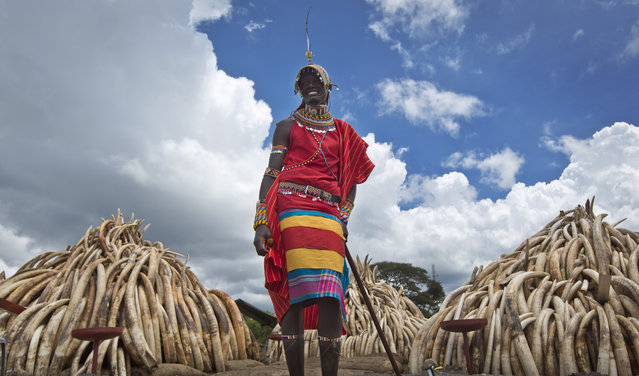
A Maasai man in ceremonial dress poses for visitors to take photographs of him in front of one of around a dozen pyres of ivory, in Nairobi National Park, Kenya Thursday, April 28, 2016. The Kenya Wildlife Service (KWS) has stacked 105 tons of ivory consisting of 16,000 tusks, and 1 ton of rhino horn, from stockpiles around the country, in preparation for it to be torched on Saturday to encourage global efforts to help stop the poaching of elephants and rhinos. (Photo by Ben Curtis/AP Photo)

A ranger from the Kenya Wildlife Service (KWS) stands guard near some of around a dozen pyres of ivory, in Nairobi National Park, Kenya Thursday, April 28, 2016. (Photo by Ben Curtis/AP Photo)
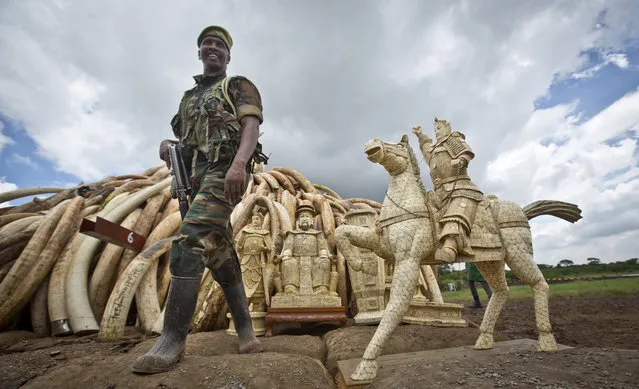
A ranger from the Kenya Wildlife Service (KWS) stands guard near an ivory statue in front of one of around a dozen pyres of ivory, in Nairobi National Park, Kenya Thursday, April 28, 2016. (Photo by Ben Curtis/AP Photo)
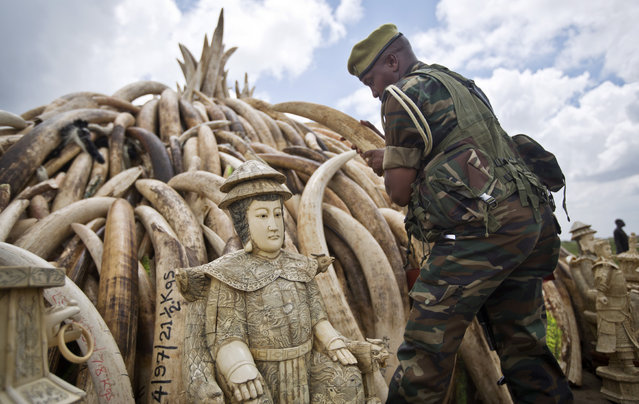
A ranger from the Kenya Wildlife Service (KWS) adjusts the positioning of tusks on one of around a dozen pyres of ivory, in Nairobi National Park, Kenya Thursday, April 28, 2016. (Photo by Ben Curtis/AP Photo)
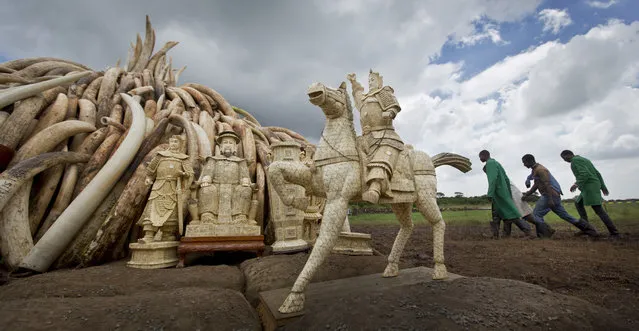
Workers walk past as ivory statues stand in front of one of around a dozen pyres of ivory, in Nairobi National Park, Kenya Thursday, April 28, 2016. (Photo by Ben Curtis/AP Photo)
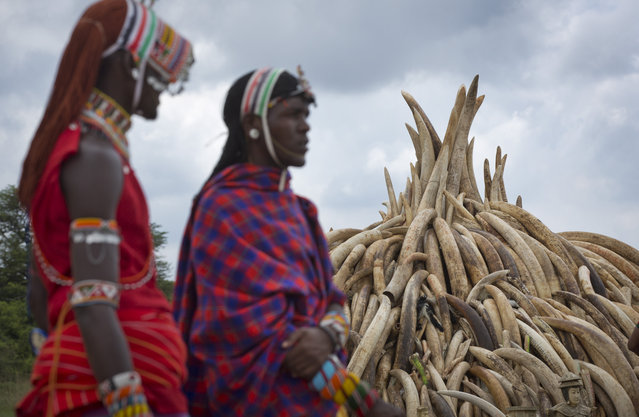
Maasai in ceremonial dress stand around after having their photograph taken with visitors, next to one of around a dozen pyres of ivory, in Nairobi National Park, Kenya Thursday, April 28, 2016. (Photo by Ben Curtis/AP Photo)
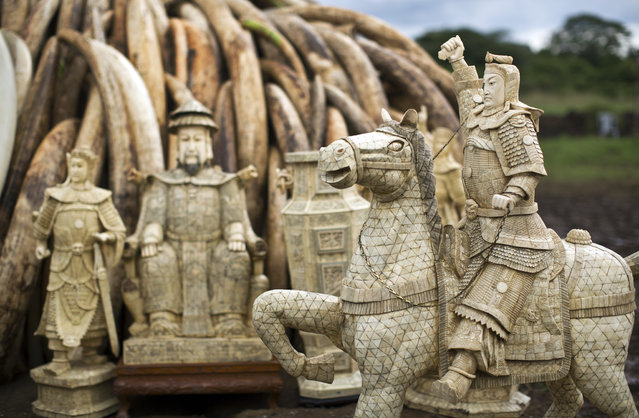
Ivory statues stand in front of one of around a dozen pyres of ivory, in Nairobi National Park, Kenya Thursday, April 28, 2016. (Photo by Ben Curtis/AP Photo)
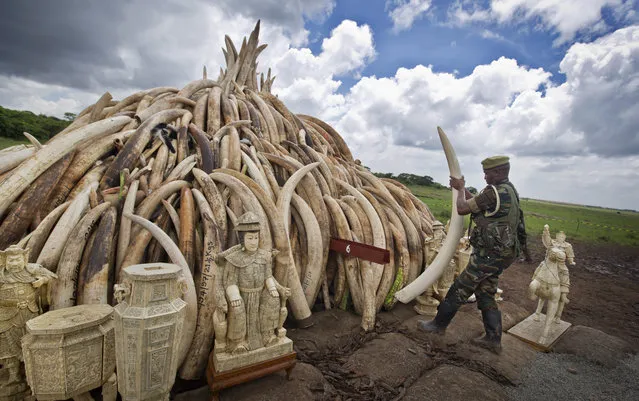
A ranger from the Kenya Wildlife Service (KWS) adjusts the positioning of tusks on one of around a dozen pyres of ivory, in Nairobi National Park, Kenya Thursday, April 28, 2016. (Photo by Ben Curtis/AP Photo)
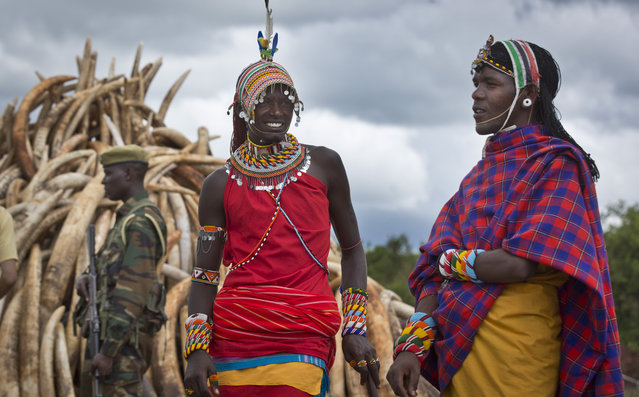
Maasai in ceremonial dress stand around after having their photograph taken with visitors, as a ranger from the Kenya Wildlife Service (KWS) guards one of around a dozen pyres of ivory, in Nairobi National Park, Kenya Thursday, April 28, 2016. (Photo by Ben Curtis/AP Photo)
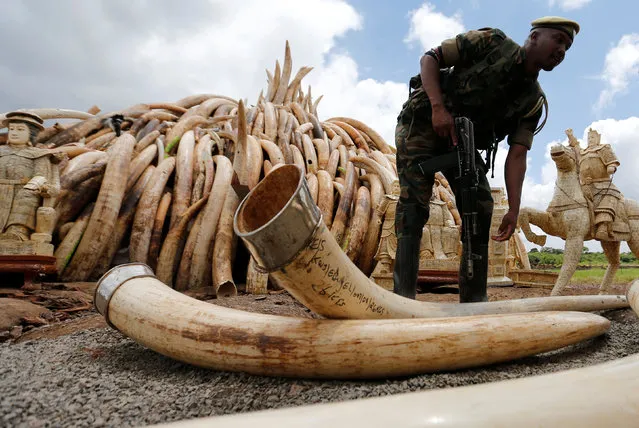
A Kenya Wildlife Service (KWS) ranger stacks elephant tusks, part of an estimated 105 tonnes of confiscated ivory to be set ablaze, onto a pyre at Nairobi National Park near Nairobi, Kenya, April 28, 2016. (Photo by Thomas Mukoya/Reuters)
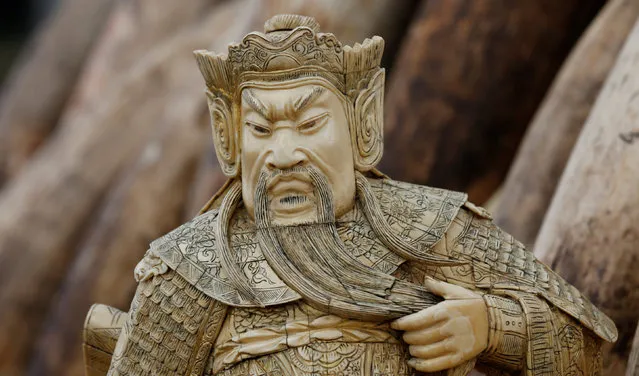
A sculpture with ivory finishings is seen among ornaments arranged near a pile of elephant tusks, part of an estimated 105 tonnes of confiscated ivory to be set ablaze, at Nairobi National Park near Nairobi, Kenya, April 28, 2016. (Photo by Thomas Mukoya/Reuters)
29 Apr 2016 11:58:00,
post received
0 comments
